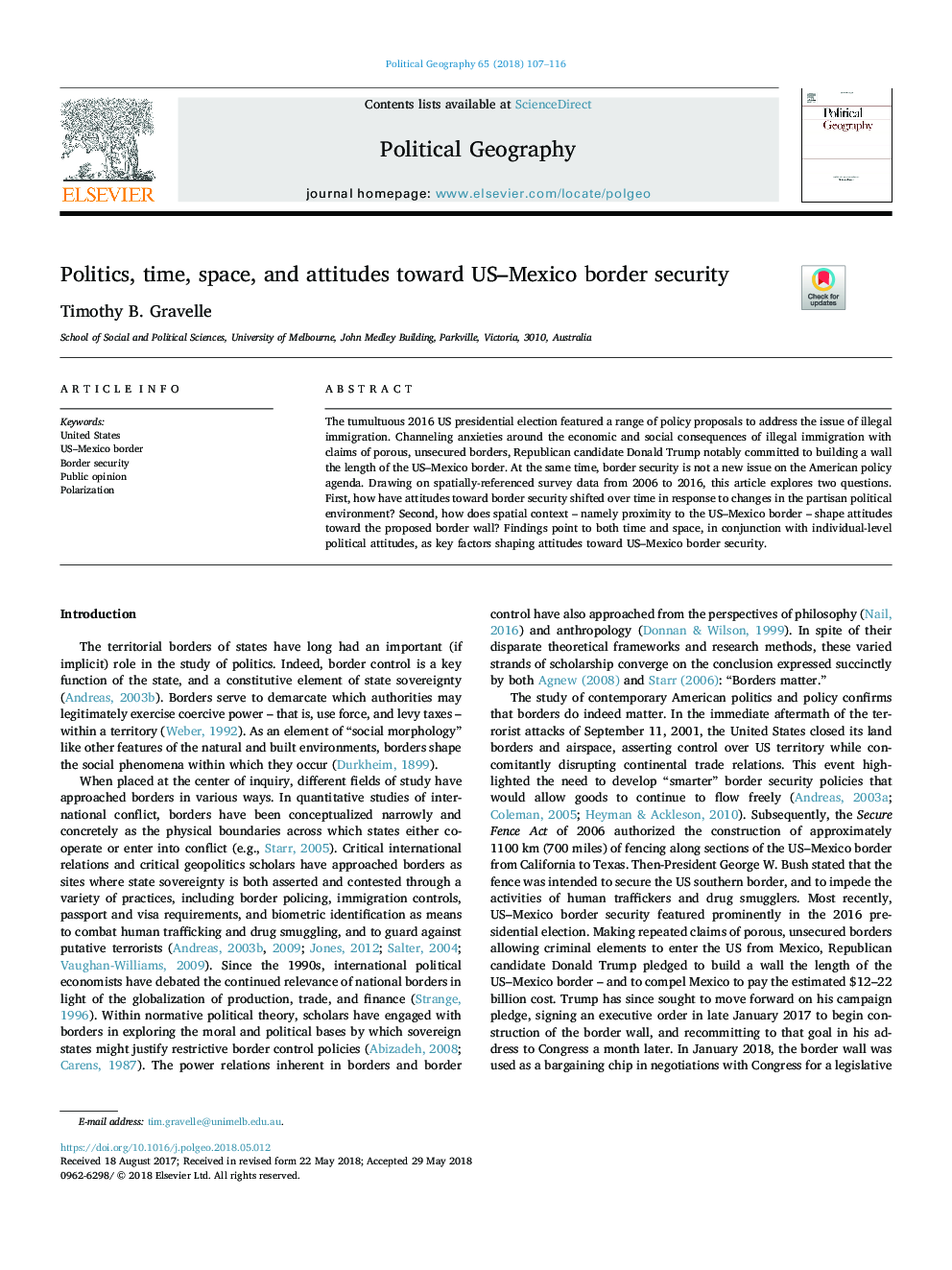| Article ID | Journal | Published Year | Pages | File Type |
|---|---|---|---|---|
| 7492542 | Political Geography | 2018 | 10 Pages |
Abstract
The tumultuous 2016 US presidential election featured a range of policy proposals to address the issue of illegal immigration. Channeling anxieties around the economic and social consequences of illegal immigration with claims of porous, unsecured borders, Republican candidate Donald Trump notably committed to building a wall the length of the US-Mexico border. At the same time, border security is not a new issue on the American policy agenda. Drawing on spatially-referenced survey data from 2006 to 2016, this article explores two questions. First, how have attitudes toward border security shifted over time in response to changes in the partisan political environment? Second, how does spatial context - namely proximity to the US-Mexico border - shape attitudes toward the proposed border wall? Findings point to both time and space, in conjunction with individual-level political attitudes, as key factors shaping attitudes toward US-Mexico border security.
Related Topics
Social Sciences and Humanities
Arts and Humanities
History
Authors
Timothy B. Gravelle,
